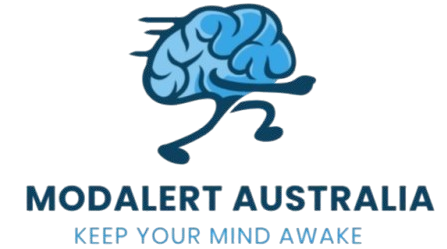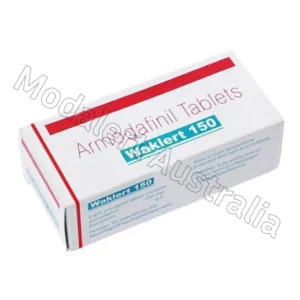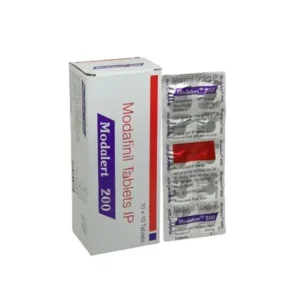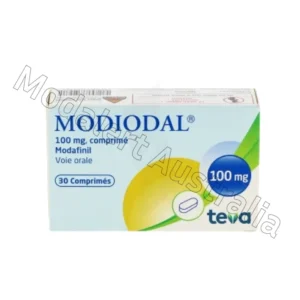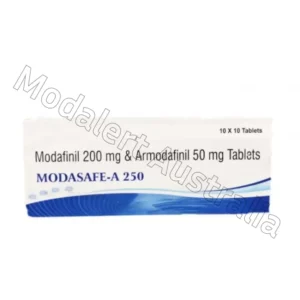How does Modafinil work for ADHD?

How does modafinil work for ADHD? Attention Deficit Hyperactivity Disorder (ADHD) is an affliction of neurodevelopment that affects millions across the globe, marked by a pattern of constant hyperactivity, inattention, and impulsivity, which affect daily life. Although traditional stimulant drugs such as methylphenidate (Ritalin) and amphetamine-based medicines (Adderall) were the mainstay for ADHD treatments, the possibility of being abused, their adverse side effects, and varying efficiency across people have led to research into alternative treatment options.
Enter Modafinil–a wakefulness-promoting agent initially developed for sleep disorders but increasingly recognized for its potential in managing ADHD symptoms. Contrary to conventional stimulants, Modafinil provides a distinctive chemical profile that has a reduced likelihood of dependence as well as a distinct spectrum of side effects that makes it an appealing alternative for those who do not have a positive response to traditional therapies.
This comprehensive guide explains how modafinil works for ADHD by examining its mechanism of action, effectiveness in clinical trials, optimal dosage strategies, safety profile, and how it differs from traditional ADHD medication. The guide will also examine the patients who could benefit more from modafinil and examine essential considerations regarding its use.
Understanding ADHD: Symptoms and Neurobiology
ADHD is among the most prevalent neurological disorders that affects around 5-10% of kids and 2% of adults worldwide. Three main symptoms identify the disorder:
- Inattention: Inability to maintain attention, forgetfulness, or disorganization
- Hyperactivity: Overactive movement, restlessness, and fidgeting
- Impulsivity: Insane actions that are not planned, disrupting other people
Neurobiological Basis of ADHD
The research suggests that ADHD is caused by dysregulation of several major neurotransmitter networks:
- Dopamine: Dopamine is essential for processing rewards in addition to motivational functions. Dopamine levels are low within the prefrontal cortex is associated with poor attention and control of impulses.
- Norepinephrine: It influences alertness and working memory and regulates emotional state.
- Glutamate/GABA: Neurotransmitters that inhibit and stimulate excitability impact cognitive flexibility and control.
Brain imaging studies of the structural brain show that people with ADHD typically have a smaller prefrontal cortex size and lower connectivity of neural networks related to attention.
Current ADHD Treatment Landscape
First-Line Treatments
Stimulants (Methylphenidate, Amphetamines)
- Dopamine levels rise, and so does norepinephrine.
- It is effective in about ~70% of patients. However, it could cause negative consequences such as insomnia as well as appetite loss and an increase in heart rate.
- You are at risk of experimenting with addiction and abuse.
Non-stimulants (Atomoxetine, Guanfacine, Clonidine)
- Adrenergic alpha-2 and norepinephrine receptors.
- It is recommended for those with a history of drug or who suffer from an anxiety disorder.
- A slower onset of action and, generally speaking, less potent than stimulants.
Why Explore Modafinil?
Given the limitations of existing treatments, particularly concerns about abuse potential and side effects, Modafinil presents an intriguing alternative due to its:
- Lower abuse liability
- A longer duration of time for action
- Different side effect profile
What Is Modafinil?
Development and FDA Approvals
Modafinil was first discovered in France in the 1970s. Modafinil was accepted by the FDA in 1998. It is used for:
- Narcolepsy (excessive daytime sleepiness)
- Obstructive Sleep Apnea (to promote the possibility of awakening despite sleep problems)
- Shift work sleep disorder (for those who are working at night but struggle with alertness)
Off-Label Uses
Other than sleep-related disorders, Modafinil may be taken off-label to treat:
- ADHD (particularly among adults)
- Enhancement of cognitive function (“smart drug” to improve focus and efficiency)
- Multiple sclerosis fatigue, and depression
Mechanisms of Action: How Modafinil Affects the ADHD Brain
Modafinil’s mechanism of action isn’t entirely comprehended, but studies have identified various important pathways:
Dopamine System Modulation
- Blocks dopamine reuptake by connecting to the dopamine transporter (DAT) and increasing the Dopamine levels in the extracellular environment.
- In contrast to amphetamines, it does not create massive levels of dopamine in the brain, which reduces the risk of addiction.
- Enhances motivation, focus, and task persistence—critical for ADHD.
Norepinephrine Enhancement
- The drug blocks the norepinephrine transporter (NET), increasing alertness and focus.
- Increases working memory as well as the ability to control impulses.
Glutamate/GABA Balance
- The increase in glutamate (excitatory) activation within the prefrontal cortex.
- Reduces GABA (inhibitory) tone, promoting cognitive flexibility.
Histamine and Orexin Activation
- The stimulation of histamine release, which can lead to awakening.
- The brain activates orexin neurons that control arousal as well as attention.
Clinical Evidence: Does Modafinil Work for ADHD?
Key Research Findings
- The 2000 study (Rugino and Rugino): Modafinil significantly improved ADHD symptoms among children.
- 2005 Study (Biederman et al.): In the 2005 Study, adults demonstrated significant improvement in hyperactivity and attention.
- 2006 Meta-Analysis: The 2006 meta-analysis showed that Modafinil was efficient but was slightly less potent than methylphenidate.
Modafinil vs. Traditional Stimulants
| Aspect | Modafinil | Methylphenidate | Amphetamines |
| Mechanism | DAT/NET blocker | DAT/NET blocker | DA/NE releaser |
| Abuse Risk | Low | Moderate | High |
| Duration | 12-15 hours | 4-8 hours | 6-12 hours |
| Side Effects | Mild (headache, insomnia) | Appetite loss, anxiety | Cardiovascular risks |
Dosing Guidelines for ADHD
- Adults: Begin with 100 mg/day and gradually increase the dosage to 200-400 mg when required.
- Children: The studies included between 170 and 425 mg (weight-adjusted).
- Best Taken: To keep from falling asleep.
Side Effects and Safety
Common Side Effects
- Dry mouth
- Anxiety
- Headache
- Insomnia
Rare but Serious Risks
- Psychiatric symptoms (rare)
- Increased heart rate
- Skin rashes (e.g., Stevens-Johnson Syndrome)
Drug Interactions
- Beware of CYP3A4 inhibitors or inducers (e.g., ketoconazole, carbamazepine, ketoconazole).
- Contraceptives containing hormones may not be as efficacious.
Advantages of Modafinil
- A lower risk of abuse than stimulants.
- More long-lasting results without the risk of a crash.
- Might help improve the cognitive performance of those with ADHD.
Potential Limitations
- It is not FDA-approved for ADHD (off-label usage).
- It is less effective in cases of severe hyperactivity.
- Limited long-term data in children.
Who Should Consider Modafinil?
- Adults who have ADHD with fatigue.
- Patients who aren’t tolerant of stimulants.
- Anyone with a past history of drug abuse.
Getting a Prescription
- Some psychiatrists do not prescribe it to treat ADHD.
- The insurance may not be able to cover the use of off-label.
- Think about speaking with a professional.
Future Research Directions
- Further studies on safety over the long term.
- Comparative studies with the latest non-stimulants (e.g., viloxazine).
- Dosing is individualized based on the genes.
Conclusion
Modafinil can be a viable alternative to ADHD, especially for people who do not respond to traditional stimulants. Its distinctive mechanisms, favorable security profile, and lengthy time frame make it an appealing alternative, but more study is required.
Key Takeaways:
✅ Modafinil enhances norepinephrine, dopamine, and histamine, which are key neurotransmitters for ADHD.
✅ Clinical trials show its efficacy, although it is smaller in strength than stimulants.
✅ Ideal for people who have ADHD who struggle with fatigue or the stimulant adverse effects.
✅ Monitoring and careful dosage is required in light of the off-label condition.
If you’re thinking of Modafinil to treat ADHD, consider consulting your psychiatrist before weighing the risks and benefits for the specific situation.
